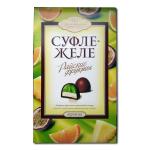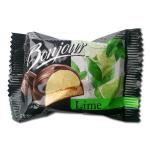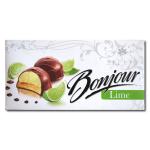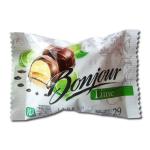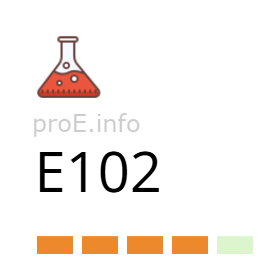
Other names for the additive (synonyms)
General Information
Tartrazine (food additive E102) is a synthetic food colorant. It does not occur naturally in its pure form. Additive E102 is derived from by-products of coal tar processing. Physically, tartrazine is a yellow water-soluble powder with a golden hue. When exposed to sunlight, additive E102 may break down into simpler compounds. The chemical formula of tartrazine is C16H9N4Na3O9S2.
Tartrazine became widespread due to its low cost. Additive E102 is one of the cheapest synthetic dyes. It is used in the food industry to give products a yellow color. It is often mixed with other dyes to create specific shades. For example, in combination with Brilliant Blue FCF (E133) or Green S (E142), various shades of green can be obtained.
Effects on the Body
Risks of additive E102
The potential harm of additive E102 is still a topic of ongoing debate. For example, tartrazine was previously banned in several European countries, but the ban on E102 and several other food additives was lifted under EU Directive 94/36/EC.
In 1986, studies in the United States showed that a small group of individuals (1 in 10,000) may experience allergic reactions such as skin rashes after consuming additive E102.
Tartrazine is not broken down in the human body and may accumulate in certain organs, potentially causing various disorders.
Recent studies conducted by the University of Southampton on behalf of the UK's Food Standards Agency (FSA) indicated that consuming products containing tartrazine may increase hyperactivity and reduce attention in children.
Unverified claims can be found online suggesting that additive E102 may cause a variety of negative effects, from headaches to cancer. However, there is no definitive scientific evidence to support these claims. Some animal studies, however, suggest that tartrazine can trigger or accelerate cancer development.
In 2009, the European Food Safety Authority (EFSA) conducted a safety evaluation of tartrazine and concluded that when the acceptable daily intake (ADI) of 7.5 mg/kg body weight is observed, additive E102 does not pose a health risk.
In most countries, the use of food additive E102 is strictly regulated. It is typically limited to 100–150 mg of dye per kilogram of the final product.
Benefits of additive E102
Due to its synthetic origin, additive E102 is not naturally present in living organisms. Currently, there are no scientific data indicating any health benefits of tartrazine.
Uses
Additive E102 (tartrazine) is most commonly found in yellow-colored confectionery and beverages: candies, cakes, soft drinks. It is also often used in canned fruits and vegetables, mustard, soups, and yogurts.
Outside the food industry, tartrazine is used as a dye for wool and silk, a cosmetic colorant, and as an adsorption-desorption indicator in chloride determination in biochemistry.
Legal Status
Tartrazine was previously banned in Austria and Norway. However, these bans were lifted following the adoption of Directive 94/36/EC.
Based on research findings, under Article 24 of Regulation (EC) No 1333/2008 on food additives, since 2010, foods and beverages in the EU containing one or more of the following colorants—Sunset Yellow (E110), Quinoline Yellow (E104), Carmoisine (E122), Allura Red (E129), Tartrazine (E102) or Ponceau 4R (E124)—must carry a warning about possible adverse effects on children's activity and attention.
Additive E102 is approved for use in the food industry in Ukraine, most European countries, the United States, and Canada.
